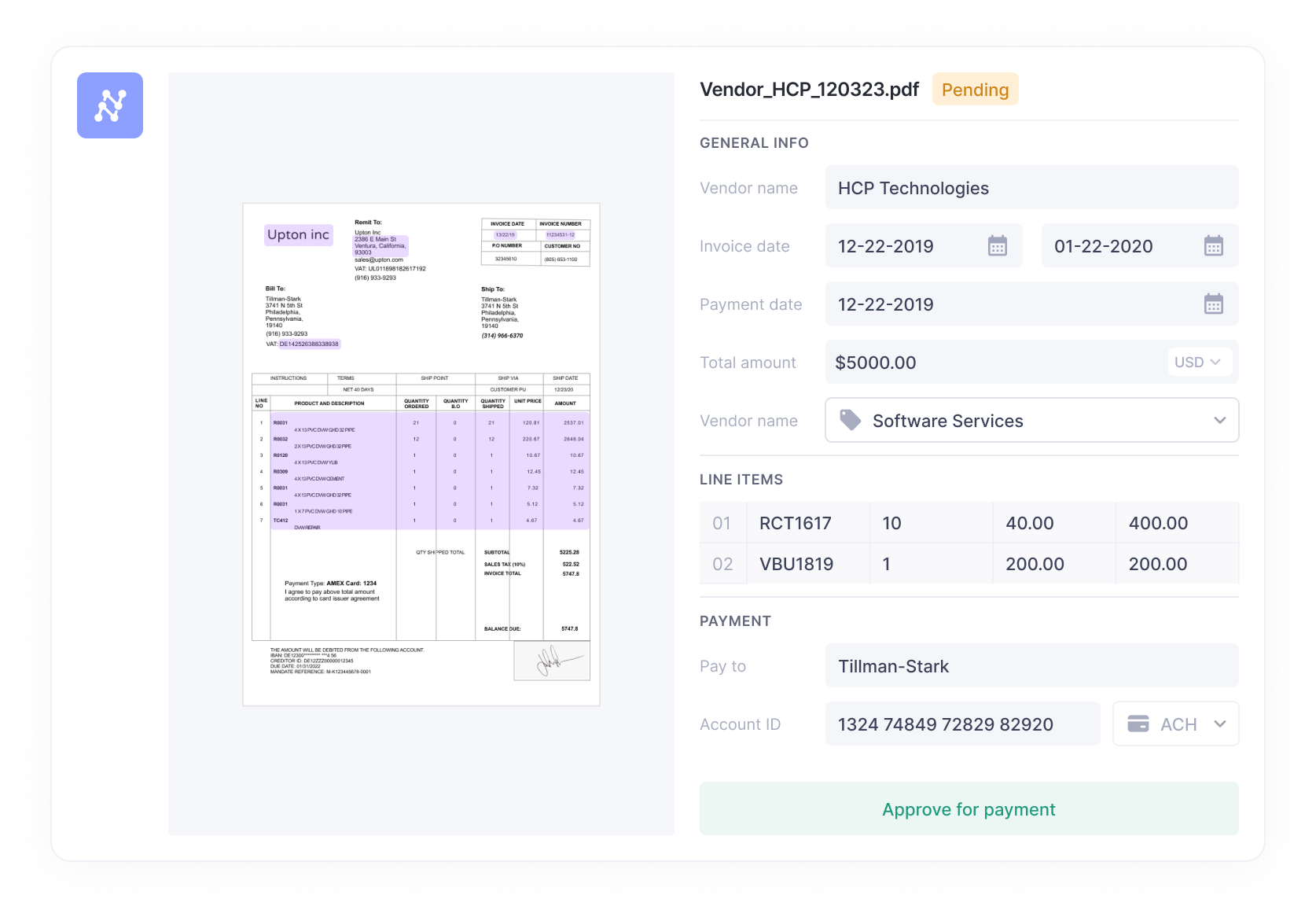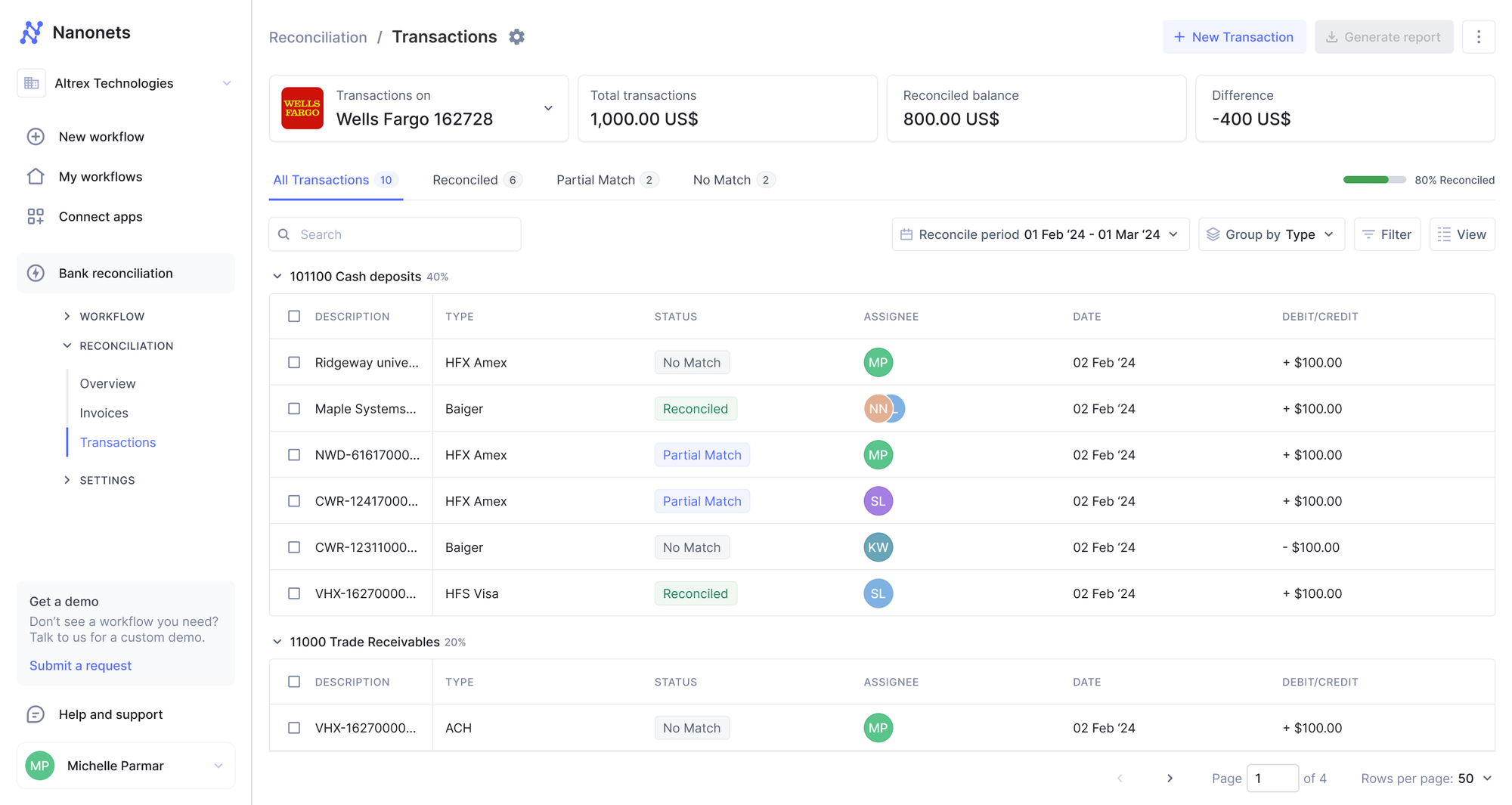A Guide to Credit Card Reconciliation
What is Credit Card Reconciliation?
Credit card reconciliation is the process of ensuring that the credit card transactions match the internal general ledger. It involves verifying the expenses recorded by the company's accounting system align with the statements provided by the credit card issuer.
Credit cards have made it easier for businesses to process payments. In the U.S. alone, credit card balances exceeded $1 trillion during the pandemic.
However, the rise in credit card usage has led to financial nightmares across accounting teams at the end of the month because this means the transactions that need to be reconciled are also on the rise. With disparate data sources and improper expense tracking, the accounting team can trace the proof of expenses across multiple data sources, which can be very time-consuming.
Types of Credit Card Reconciliation
Accounting teams come across these two types of credit card reconciliation:
Statement-based reconciliation:
This deals with the company's credit card expenses. It involves matching the credit card expenses recorded by the company's accounting tools to the credit card statement received by the credit issuer. This is essential to ensure the validity of the credit card charges is reflected in the financial books.
Merchant service reconciliation:
This is pertinent to the income side of the reconciliation, where customers pay for the business via credit card. The accounting team must reconcile the credit card transactions received with the proofs received via the merchant service provider or payment processor, such as Paypal.
Why Is Credit Card Reconciliation Important?
Company credit cards are a popular option for managing business expenses. They promote convenience and ease of use for employees to handle work-related costs.
The accounting teams need to track each expense charged through the credit card. All these entries need to be present in the general ledger, which needs to be matched across bank statements, receipts, and credit cards to verify the validity of the expense claim.
When line items of the general ledger don't match the credit card statement, the transaction is escalated to the financial controller, who identifies why the discrepancy occurred in the first place.
Credit card reconciliation is essential as it helps businesses prevent fraud, maintain financial integrity, optimize spending, and keep the company's books audit-friendly during the financial close process, typically occurring at the end of each month.
How to do Credit Card Reconciliation?
Credit card reconciliation involves matching credit card statements to internal financial records. But how do we go about this?
Gathering all the Statements and Receipts or supporting documents:
First, we must collect all the credit card statements and the relevant receipts for the specified period. Receipts function as proof of expense. Whenever the corporate credit card makes a payment, an invoice is provided, which needs to be recorded by the expense management system or manually recorded in spreadsheets.
Matching the expense to the transactions:
Now, the process involves going through each transaction listed in the credit card statement and comparing it to the receipts. The transactions need to be verified to ensure that they are authorized and match the purpose and amount of the expense.
Investigate discrepancies:
Reconciliation is a critical part of the financial close process to ensure the integrity of the business's finances. In case of discrepancies, the route cause must be identified, the persons involved in the payments must be notified, and in some cases, the bank authorities must be informed.
Obtaining Approval:
Once all the data is recorded in the general ledger, factor in the fees of the credit cards and cross-check whether all the credit card expenses match. After this bring in the controllers or the designated finance managers who can review and provide the approval for the entire process.
Problems involving Credit Card Reconciliation
There are several challenges associated with credit card reconciliation.
Shared Company Credit Cards:
In many instances, the same credit card is shared among multiple employees. This proves problematic for financial closers as they must identify which employee made the purchase when receipts are not adequately present and can prove to be a fraud risk.
Missing Receipts:
The issue of missing receipts raises the problem of untraceable sources of truth. This results in a gap in the documentation and invoices are involved to fill in the gap by matching against the credit card statements.
Merchant Account Reconciliation Issues:
When payments are processed through merchant accounts, problems can arise when fees are deducted on the platform, formatting issues on reporting transactions, and other problems that need to be factored in during the manual reconciliation.
Manual Data Entry:
Humans make many errors while entering data manually. Problems such as double entry and rounding errors might arise when reconciling credit cards. But this also implies that when a high volume of transactions needs to be reconciled, chances of missing human errors, duplicate submissions, and inaccurate information may prove to be a problem.
Diverse Data Points:
A single credit card transaction can generate multiple data points that need to be matched—the credit card statement, the receipt, and potentially an invoice in the accounting system. Keeping track of all these data sources and ensuring they align is prone to errors, especially without a centralized storage system.
Paper receipts:
Without capturing or digitizing receipts and invoices, storing and recording data from paper receipts can be error-prone and easy to misplace such that the entire process, when conducted at the month's end, is inefficient.
Credit Card Reconciliation Software as a Solution:
Automating the process of credit card reconciliation can help leverage accuracy and efficiency and maintain the financial integrity of bookkeeping.
Credit card reconciliation software offers a range of features and benefits that can help curb the challenges listed above and let accounting teams facilitate financial closing with automation.
Key features of credit card reconciliation software:
Automated data import:
Credit card reconciliation software can integrate with banks and financial institutions to import data automatically; this eliminates the need for manual data entry and scales with higher volumes of transactions which are in need to be reconciled.
Automatic Transaction Matching:
Reconciliation or Matching logic is a speciality for credit card reconciliations. The advanced transaction matching algorithms are capable of matching the credit card transactions with the corresponding entries in the accounting system.
Integration with Accounting systems:
With disparate data sources being involved in B2B transactions, credit card reconciliation software can bridge the gap, which might otherwise leave accounting teams with strands full of hairs on their hands while they try to collect the invoice handed over by the supplier, tracing the transaction back to the accounts payable ledger and collecting the receipt.
How Nanonets Solves Credit Card Reconciliation:
Nanonets is an Intelligent Financial Workflow automation platform. Nanonets specializes in data extraction from documents, turning unstructured data into structured data reports, boasting an accuracy of 99% while doing so. Nanonets is a key platform for accounting teams that face a high volume of transactions that need reconciling at the end of the month.
For example, let's say you get charged for a software subscription. The documents or data points that you need to consolidate in (real-time) order to perform credit card reconciliation are:
- The invoice gets generated via the software provider.
- Importing the invoice into your accounts payable system or your general ledger
- When the payment comes in via the credit card, collect the receipt to perform the match.
The reconciliation process involves matching the invoice, the payment made with the credit card, and the receipt to ensure that all documents are consistent and that the payment was correctly recorded.
On Nanonets, you can upload all your invoices in one go; this can be in the range of 1000-10,000 documents (it doesn't matter). Nanonets' Invoice OCR automatically extracts all the data from the invoices into structured data for the specified period and stores and converts them into tabular data, which is a predefined template that is much easier to consume. Sometimes invoices have different formats and languages, but they don't matter; on Nanonets, organizations can achieve up to 99% accuracy by automating manual data entry and saving time in the process.

Now, download the credit card statement that your credit card issuer has provided you for the specified time period. Once uploaded to Nanonets, again the data capture process begins and using advanced matching algorithms Nanonets is able to ensure that each entry in the credit card statement corresponds to an invoice and a payment record in the accounts payable system.

This helps accountants save a bunch of time and ensure accuracy at the end of the month when faced with a massive load of transactions that need to be reconciled.
Nanonets Real-Time Solution:
Let's say instead of reconciling your credit card transactions at the end of the month; you wish to achieve doing this in real-time. This is how the process can be achieved on Nanonets.
Integrate your corporate credit card on Nanonets using workflow automation. So once an employee charges your credit card, they receive automation on their text message or their workplace like Slack to attach a receipt for the credit card expense.

Once this is done, Nanonets' Receipt OCR can extract data from these receipts and consolidate them in the dashboard. Nanonets then pull data from the credit card statement issuer (either by uploading the credit card statement manually or requesting a custom integration on the platform).

After getting both databases ready, Nanonet's advanced matching algorithm can perform automated matching and trigger workflow and alerts wherever there is a discrepancy, and the relevant people are flagged to look into it.

Conclusion
Credit card reconciliation is an essential process in financial management, especially for businesses engaged in B2B transactions. It ensures that all transactions recorded in the accounts payable system align with the actual payments made via the credit card and the corresponding documentation such as invoices and receipts.
By incorporating an automated solution like Nanonets, businesses can streamline the reconciliation process, reducing the manual effort required and minimizing the risk of errors. This not only enhances efficiency but also ensures that financial records are accurate and up-to-date, ultimately supporting better financial decision-making and compliance.




